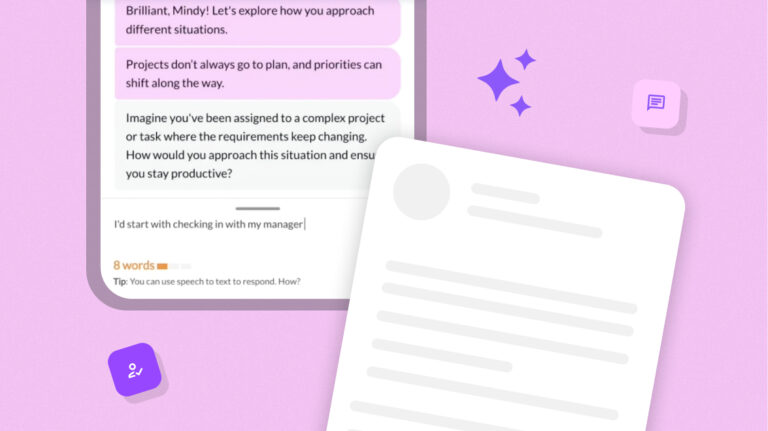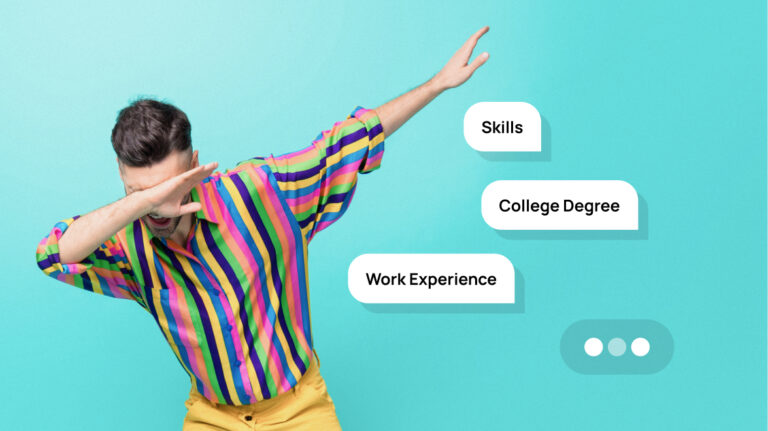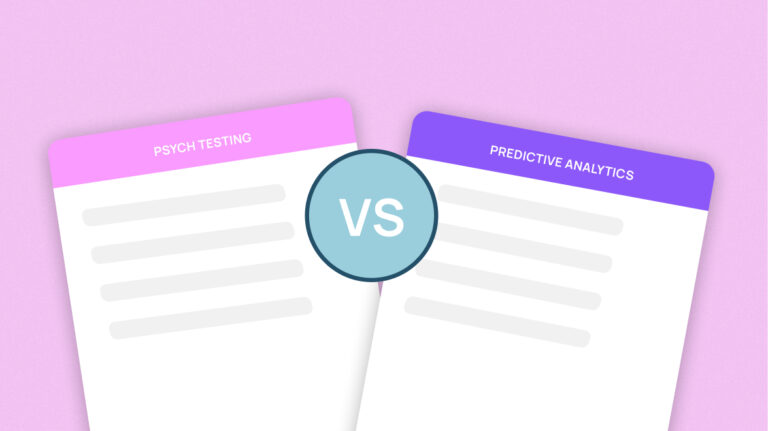Interview automation: 6 Reasons to Start Your Hiring With Interviews
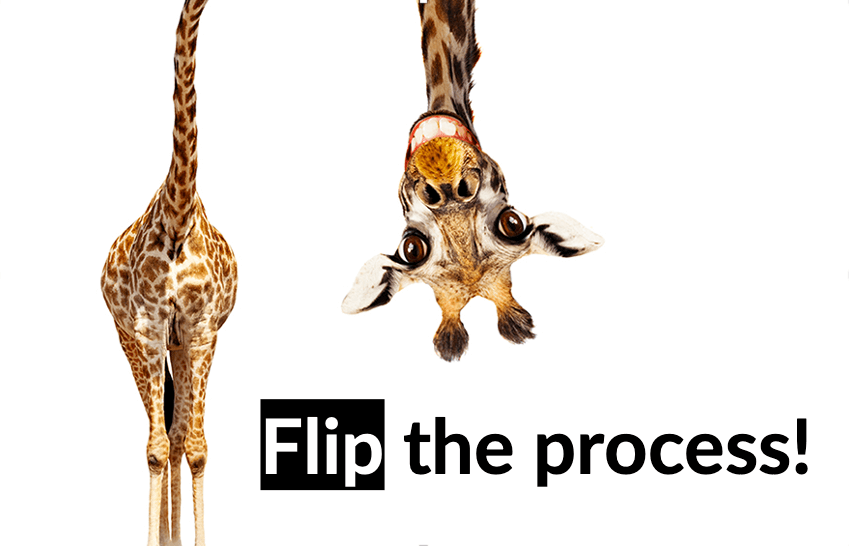
We’ve relied on interviews for centuries. They are an important step in the selection process.
If done effectively, interviews are a great means of assessing a candidate. We trust them to enable us to determine if our candidates have the attributes, traits, behaviours, skills, experience and personality to meet the role requirements.
Here’s the problem with traditional methods and where AI interview platforms come in. It is physically impossible to interview every candidate manually. So, we rely on CV screening as the first step, a process often augmented by AI interview software. A recruiter on average spends six seconds looking at the resume. In those six seconds, a snap judgement is made on shortcuts (biases).
At the starting block, the process has already failed. You cannot possibly pick qualities like grit and initiative from a CV, right? Then, of the people who applied for the job, around 13% of applicants may get an AI job interview. During C-19 times – you can more than half that number.
With interview automation, interviews are at the
start of your recruiting process – not midway through it.
In this way, you realise the value of interviews without investing one-minute of your time in them.
Imagine this. Everyone has already been interviewed before you have read one CV. A pre-qualified, pre-assessed, high-quality shortlist before you have read ONE CV. That’s the dream! Because now you are not wasting time reading resumes of people who either can’t do the job, won’t do the job, or they just don’t fit. And, instead of flicking through 100 resumes for a puny 6 seconds each, you can take the space to consider the best. The best? Those candidates who have already been pre-selected for that grit and initiative you so badly want in your team.
Okay, so here are the 6 reasons to start your recruiting process with interviews
You can try out Sapia’s FirstInterview experience here.
 1. You will reduce your time to hire
1. You will reduce your time to hire
Time to hire measures recruiting efficiency. It is the number of days between the first contact with a candidate to the day the candidate accepts the offer. Screening is your first time-to-hire bottleneck.
Even if you’re using an ATS you may be able to easily rank resumes, but you still have to consider them. And there’s your block.
A new generation of interview automation is here so that you can have every candidate interviewed in a flash. Of course, it integrates and works seamlessly within your ATS. It saves recruiters from screening resumes and boosts the efficiency of your recruiting process.
Reducing time to hire is great for candidates who get the job faster (or can move onto the next job). It is terrific for recruiters who get the reward of quicker placements and attaining their metrics. It is a relief for hiring managers who get their team to a full complement and can get back to their actual job.
Interviewing automation makes your recruiting process much faster – usually around 90% faster.
 2. You will improve the overall quality of hires
2. You will improve the overall quality of hires
Hiring managers want their best team. They want people who can do the job, who will do the job and who will perform. With interview automation, Ai assesses traits, communication skills, optimism and temperament prior to you getting involved.
As a Recruiter, you get a complete picture of a candidate beyond what is written on their CV. You learn a lot of information about the candidate. Ai will rank and grade all your candidates for you. It pre-qualifies those who are a fit to move forward.
Have you ever thought to yourself: “If only I could hire 10 more Julie’s!” (*insert name)? With Ai, you can. And, as far as quality goes, this is the distinction from all other forms of pre-employment.
AI learns what a successful hire looks like and pin-points more like them. AI bases this learning on your historical recruiting decisions and then applies that knowledge to new candidates to automatically screen, grade, and rank them.
Interviewing automation gets you to the best of your talent pool much quicker resulting in, on aggregate, much better quality in your hires.
 3. You will reduce bias and improve diversity
3. You will reduce bias and improve diversity
Diversity and Inclusion have been on the HR agenda for a long time. And in more recent years, it’s made its way onto the Business agenda too. In 2020, global management consulting company McKinsey again confirmed that companies with both ethnic and cultural diversity and gender diversity in corporate leadership are outperforming non-diverse companies on profitability. They found: “The most diverse companies are now more likely than ever to outperform non-diverse companies on profitability”
Diversity improves employee productivity, retention and happiness. Settled then. We want businesses that are diverse and fair.
The problem is that humans are inherently biased.
Here’s the King of Recruiter biases: The Dunning-Kruger Effect. It’s where we lack the self-awareness to accurately assess our own skills meaning that we overestimate our ability. You think you are a brilliant totally unbiased Recruiter, right? You may well be, but it’s not uncommon to think you’re smarter or better than the average person. Haven’t we all skipped over candidates who don’t have the requisite ‘Big 4’ employer on their resume, or the ‘right kind of degree’?
Even when we don’t mean to be, human bias is pervasive. We keep these biases alive, through our relentless refusal to admit our shortfalls. And unfortunately, this isn’t great when it comes to hiring for diversity.
Ai is far less bias than humans.
The reason for this is you can test, adjust and get rid of biases. The good news is Ai doesn’t resist stubbornly while claiming absolute fairness and denying any bias. This means that undesirable machine learning biases will tend to decrease over time. In Sapia’s case, its blind screening at its best. Nothing that typically influences human bias is introduced into the algorithms – no CV’s, no socials, no videos, no facial recognition – it’s just the candidate and their text answers. Much fairer for candidates of course and a richer experience where they can just be themselves.
Interviewing automation makes your recruiting process much fairer and your hiring decisions far more diverse.
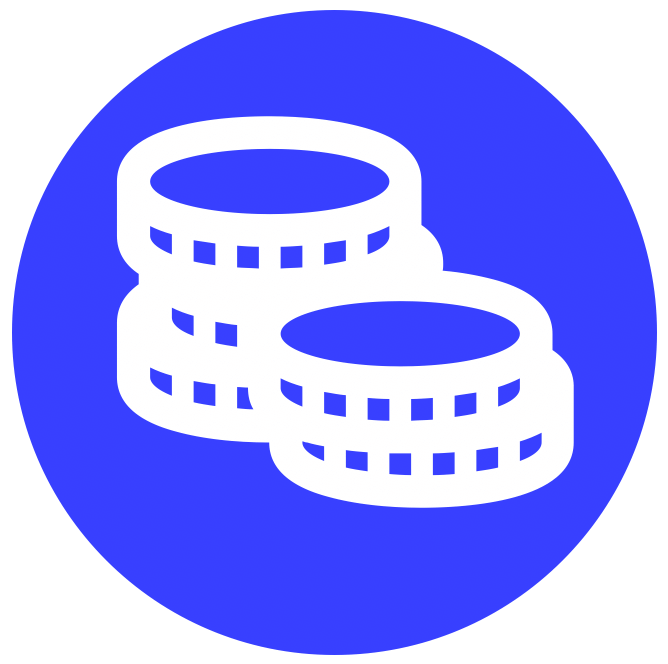 4. You will reduce the cost of each hire
4. You will reduce the cost of each hire
Those who have already automated their interviews have reallocated that spend toward higher-value investments.
Your ability to hire cost-effectively will be hampered if you don’t have the right tools. Make sure that all your recruitment technology is pulling in the same direction – to make hiring as seamless, streamlined and stress-free as possible – rather than working against you. The money you invest in the right technology will soon pay off when it comes to time and efficiency savings.
The real game-changer is that interview automation can also help you solve a churn problem.
Significant costs are borne by an organisation when an employee voluntarily leaves.
These include replacement costs such as costs associated with advertising, screening and selecting a new candidate. A study conducted by the Australian HR Institute in (AHRI) 2018 across all major industry sectors in Australia (Begley & Dunne, 2018) found that on average companies face an annual turnover rate of 18%. Within the age group of 18 to 35 it worsens significantly, at 37%. That is, more than 1 in 3 people in the youngest age group leave an organisation within a year.
Imagine if you could predict those with a likelihood of churning before you had met them? Then think about the enormous savings that would be derived across your organization if you could do so.
If you haven’t yet automated your interviews, you are spending too much on hiring.
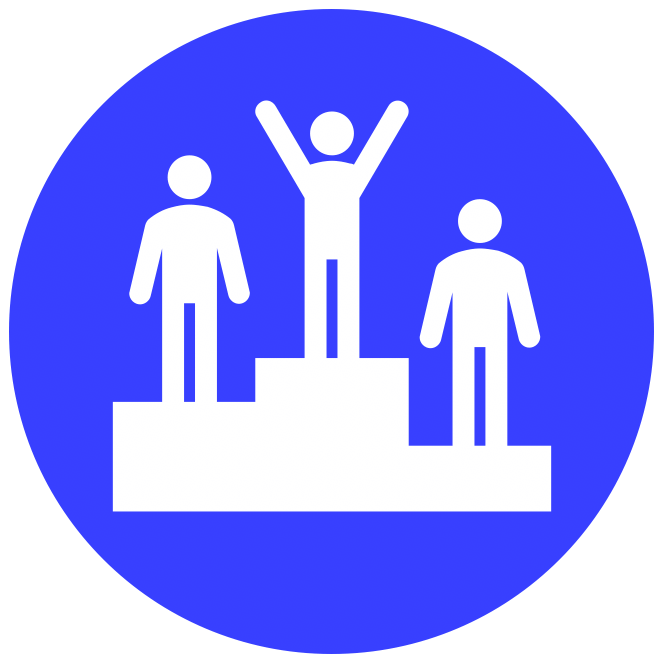 5. You will increase the productivity of every recruiter
5. You will increase the productivity of every recruiter
What’s the toughest part of your job as a Recruiter? If you had more time, could you do that part better?
Chances are that reading CV’s and running interviews are not the hardest part of your job but are the most time-consuming. What if you could have available time for those high-value tasks. Like managing your stakeholders. Getting to know the business better. Improving your business partnership skills. Learning the essence of what Hiring Managers actually want. Networking and improving talent pools, particularly for those hard-to-fill roles.
So, if interview automation can take care of all of your first interviews for you then ask yourself:
Of how much value am I when buried knee-deep in screening? Visualise less of that and more of the buzz you get when you find the perfect fit. There’s no better feeling than knowing you’ve helped someone further their career AND helped your Hiring Manager find someone who ‘just fits’ and will perform. Nothing can replace the collaboration and empathy that you as a live person can extend.
We cannot discuss productivity without also giving mention to structured interviews.
According to this Sapia research paper published by IEEE: Structured interviews (where the same questions are asked from every candidate, in a controlled conversation flow and evaluated using a well-defined rubric) have not only shown to reduce bias but also increase the ability to predict future job performance. With interview automation, the questions asked in a structured interview are derived using a job analysis as opposed to interviewer preference and are typically based on past behaviour and situational judgement.
Interviewing automation frees up recruiter’s time to perform higher-value tasks with far greater output.
6. You will boost candidate experience (beyond imagination)
With interview automation you can move from an elongated process that leaves candidates in the dark, not knowing where they stand, to a super-efficient experience that feels empowering.
According to the Society for Human Resource Management (SHRM), 82% of candidates report the ideal recruiter interaction is a mix of innovative technology and personal, human interaction.
If your mission is to provide the best experience possible to your candidates, interview automation should not be ignored.
Improving your candidate experience is so much easier by adopting technology that is inclusive, personalised and relatable. Sapia’s interview automation offers a mobile-first, chat interview that interviews everyone in-depth and at scale. Giving every candidate personalised feedback.
Here is what interview automation offers above a manual interview process for candidates:
- Utterly relatable – An accessible, mobile-first ‘familiar’ text experience that candidates enjoy with no confronting videos or questionnaires. Questions are related directly to role attributes.
- Totally convenient – Completing it anywhere, anytime and in your own time with an untimed interview – giving candidates the space to be themselves.
- Wholeheartedly fair – Everyone gets an interview levelling the playing field for all. It’s blind screening at its best – no gender, age or ethnicity revealed.
- Unbelievably motivating – Following their FirstInterview all candidates receive an email with personalised insights. It’s delightfully surprising to receive something of such great value.
- Surprisingly beneficial – Candidates receive coaching tips that help them with their career, transforming the experience.
- Highly open – Candidate experience improves by 148% when candidates are asked for interview feedback. That’s why after their FirstInterview all candidates can rate their experience and give their input.
Interviewing automation enhances candidate experience, with no further time investment from you.
Download the 2020 Candidate Experience Playbook here
Taking the first step on automating your interviews: start with volume roles first.
Gartner predicts by 2021, 50% of enterprises will spend greater budget on chatbot creation and bots than traditional mobile app development.
Businesses are adopting Sapia’s chat interviews across various job families – especially in front-line customer service roles. The quickest payback you will get on an investment in interview automation is to apply it to your high-volume roles first. Interview automation can truly enhance your high-volume recruitment process and help you make it more efficient (and pleasant) for everyone involved. This will help you get your time-back really quickly and release the budget for automation in other areas of recruiting.
The future of all first interactions between candidates and your business will be through automation. The only decision, for now, is where you will adopt interview automation first.
Read the Ultimate Guide to Interview Automation>

Join the movement
To keep up to date on all things “Hiring with Ai” subscribe to our blog!
You can try out Sapia’s FirstInterview right now, or leave us your details here to get a personalised demo.
Have you seen the 2020 Candidate Experience Playbook?
If there was ever a time for our profession to show humanity for the thousands that are looking for work, that time is now.

